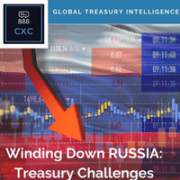EU crypto regulation: towards global cooperation?
19-07-2022 | Carlo de Meijer | treasuryXL | LinkedIn |
Finally, after two years of intensive deliberations, EU legislators have reached a provisional agreement on its landmark Markets in Crypto Assets (MICA) directive, that is aimed to govern the crypto space in Europe for the years to come.
The recent crypto market crash shows how highly risky and speculative crypto currencies are. It confirmed the urgent need for enhanced regulatory and law enforcement frameworks in the EU. So far, digital assets, such as cryptocurrencies, have been largely out of the scope of EU legislation, while divergent laws exist in the member states.
But what may we further expect? Is this the start of further regulatory co-operation worldwide or will it trigger growing regulatory competition between the various countries, especially the US and UK, that are presently dominating the crypto market.
The deals
The deal reached on 30 June consists of two elements: the Markets in Crypto Assets or MICA regulation and a Bill on the Transparency of crypto asset transfers. Both laws are put in place to set clear common rules for a harmonized market in the EU.
The aim of the regulation is to put an ’end to the crypto wild life’ by creating a comprehensive regulatory framework for the crypto-asset market in a balanced way that supports innovation and harnesses the potential of crypto-assets while preserving financial stability and protecting investors.
Such a regulation should provide legal clarity for the crypto business including crypto asset issuers, guaranteed equal rights for asset service providers, as well as ensuring high standards for consumers and investors.
While MICA will put new requirements on exchanges and issuers of stable coins, and provide legal certainty for crypto-asset issuers, guarantee equal rights for service providers and ensure high standards for consumers and investors, the Transparency Bill will force crypto asset service providers(CASPs) to gather information about the transfers they operate to prevent money laundering in crypto.
New provisions
The proposed EU regulation is especially targeting so-called crypto asset services providers(CASPs) and aims to provide a consistent approach across all 27 member states and covers issues like authorisation and supervision, transparency, disclosure and authorisation and supervision of transactions by crypto asset service providers (CASPs) as well as consumer and investor protection, stablecoins and environmental considerations.
License
MiCA will change the registration and authorization process for crypto asset services providers in Europe. Under the provisional agreement they will need an authorization in order to operate in the EU. National authorities will thereby be required to issue authorisations within a timeframe of three months. Regarding the largest CASPs, national authorities will transmit relevant information regularly to the European Securities and Markets Authority (ESMA).
These CASPs will have to be licensed by national authorities and must be based in the EU and have their office within the European Union by a legal person, with a predetermined capital base and adhere to consumer protection safeguards, and be listed on a register held by the European Securities and Markets Authority.
This license will give issuers of crypto assets and providers of related services a “passport” to issue and sell digital tokens in the EU \nd serve clients across the EU from a single base.
Public register
To avoid any overlaps with updated legislation on anti-money laundering (AML), which will now also cover crypto-assets, MiCA does not duplicate the anti-money laundering provisions as set out in the newly updated transfer of funds rules agreed on 29 June.
The new framework will put ESMA in charge of a public register where all non-compliant crypto providers who offer services without authorization will be listed. This to reduce anonymity to tackle money laundering and evasion of sanctions.
EU cryptocurrency exchanges will be obliged to identify users and track suspicious transactions. Entities issuing crypto assets will have to disclose basic information such as a description of the issuer, the project and the use of the funds. This “identity card” will be backed up by details of the rights, obligations and risks associated with these digital assets. National authorities will be notified of all of this information.
Crypto-asset service providers, whose parent company is located in countries listed on the EU list of third countries considered at high risk for anti-money laundering activities, as well as on the EU list of non-cooperative jurisdictions for tax purposes, will be required to implement enhanced checks in line with the EU AML framework. Tougher requirements may also be applied to shareholders and to the management of the CASPs, notably with regard to their localisation.
White Paper: transparency
CASPs will also be obliged to be more transparent about their financial position as well as the tokens they offer. The regulation makes it a legal obligation for crypto projects to issue a White Paper on all tokens, with all the characteristics and risks and submit it to the regulatory authorities, although the submission will be merely declaratory and the regulatory authorities do not enjoy the power to authorise or reject crypto projects, other than stablecoins.
The list of information that crypto projects are required to share with the public is relatively slim and does not include many aspects that are already customarily included in white papers. Most importantly, the regulation does not require white papers to explain the project’s ‘tokenomics’.
Consumer and investor protection
This regulatory framework also aims to provide an appropriate level of consumer and investor protection against some of the risks associated with the investment in crypto assets. Consumer protection standards adopted in the regulation will legally protect consumer funds against cyber-attacks, theft or misuse which are within the responsibility of the cryptocurrency exchanges.
Crypto companies will be held more accountable for investor protection and for investor losses. They must act ‘fair, honest, professional in the best interest of their clients and provide such clients or potential clients with fair and not misleading information’.
Once implemented, the law will require crypto asset service providers (CASPs) to adhere to certain requirements aimed at protecting investors as well as warn clients about the potential risk associated with investing in a volatile crypto market, and publish their pricing policy on their website.
Although these regulations will not provide protection against all of the risks associated with cryptocurrencies, individuals’ own knowledge and analyses will therefore continue to be a key method of consumer protection.
Un-hosted wallets
Unhosted wallets, also known as cold storage or self-custody that enable the user to maintain a cryptocurrency balance outside of an exchange, are mostly excluded from regulation. Transfers between exchanges and so-called “un-hosted wallets” owned by individuals will need only to be reported when transfers are made to a person’s own wallet, and when the value tops the 1,000-euro threshold. This move is designed to reduce anonymity, and thus money laundering, through crypto transactions.
Stablecoins
Stablecoins, which the regulation calls ‘asset-referenced’ tokens’, are also subject to strict regulatory standards of transparency, operation, and governance.
When the regulation comes into force, existing stablecoins will have to seek authorisation from the regulatory authorities to be traded within the EU. Issuers of these so-called asset referred stablecoins will need to have a registered office in the EU to ensure the proper supervision and monitoring of offers to the public of asset-referenced tokens. Most importantly, the regulation prohibits the issuance of interest to e-money tokens. The authorisation requirement applies also to stablecoins already in circulation.
Reserves will have to be “legally and operationally segregated and insulated” and must also be “fully protected in case of insolvency.” Stablecoins that become too large/big also face being capped at 200 million euros in transactions a day under the new regulation.
Holders of stablecoins will be offered a claim at any time and free of charge by the issuer, with all stablecoins be supervised by the European Banking Authority (EBA), with a presence of the issuer in the EU being a precondition for any issuance.
Environment
MiCA will also address environmental concerns surrounding crypto. Crypto asset providers will be required todeclare information on their environmental and climate footprint and disclose their energy consumption to regulators as well as the environmental impact of digital assets they choose to list, using the EU regulatory standards as a basis.
The ESMA is now developing draft regulatory technical standards on the content, methodologies and presentation of information related to principal adverse environmental and climate-related impact.
Oversight of the crypto industry
The new EU regulation of the crypto market will primarily be enforced by national regulatory authorities designated by the member states. They will employ national procedural rules and impose remedies foreseen in national law, including criminal remedies where applicable, when they enforce the regulation.
While EU member states will be the main enforcers of the rules, the regulation also gives the European Banking Authority and the European Securities and Markets Authority significant supervisory and investigative powers.
ESM will be responsible for oversight of the industry, while a new legal framework will seek to regulate public offers of crypto assets to protect market integrity. ESMA will thereby be given powers to step in to ban or restrict crypto platforms if they are seen to not properly protect investors, or threaten market integrity or financial stability.
In the meantime the European Council reached an agreement to form an anti-money laundering body that will have the authority to supervise certain CASPs. And will probably get the name of AMLA.
Reactions from the cryptomarkets
How ate crypto firms reaction? Overall, crypto industry players are reacting positively to the EU’s MiCA efforts, and largely welcomed this outcome that heralds the end of several months of negotiations.
As such a harmonized, comprehensive framework could give market participants regulatory the desired clarity to make sure their activities are compliant with AML regulations and crypto end-users key projections and market-wide assurances. The rules would underpin the development of a robust and well-functioning market, within which they could safely operate their businesses further driving crypto innovation and adoption in the EU region.
Some called the rules “a significant milestone”, while others said the comprehensive new framework was “exciting”, providing regulatory certainty to the market, and raising industry standards.
Crypto expansion in Europe
These regulatory developments haven’t stopped firms within the digital asset space from planning their expansion in the EU. Several industry insiders see the move as a positive step and believe Europe could lead the way on crypto regulation saying the EU framework represented a “significant milestone’.
A growing number crypto firms operating or planning to expand into Europe have already taken steps ahead of schedule to ensure compliance. Such as cryptocurrency exchange STEX, that has partnered with KYC and AML platform Ondato in March 2022 to ensure the exchange’s continued customer growth within a compliance environment of imminent new EU regulation of crypto-assets. But also Coinbase, that already holds authorisation from Germany and Ireland, as well as other crypto platforms are seeking licenses in several Eurpean countries.
How to progress?
We are not there yet! The provisional agreement will now move to be approved by the Economic and Monetary Affairs Committee, and should be rubber-stamped by the European Parliament before being translated into legislative text and gazetted in the EU’s Official Journal. The European capitals will then have 18 months to implement them in the national legislation. This process could thus take until 2024 for states to implement MICA and the EU crypto regulation effectively be working.
Some loose ends
There are still a number of regulatory open issues that should be taken into account in a future revision of the EU crypto regulation such as NFTs, the environment, supervision .etc. An additional problem is that legislation is always lagging behind practice, this especially goes for crypto where technological developments are very rapid. In the meantime EU policymakers are already planning MICA2 to tie up any legal loose ends.
NFTs
Members of the European Parliament have proposed that NFT trading platforms should be made subject to the EU anti-money laundering (AML) laws and should be brought in the scope of MiCA, with authorization and supervision of crypto firms at member state level. They have been tasked with determining whether NFTs require a separate regulatory framework to address the emerging risks of such new market.
Environmental impact
Another issue that should be solved is the question how to address the environmental impact of crypto assets. The final version of the new directive mandates co-legislators to take into account the environmental impact of crypto assets in a future review. The European Commission would assess the energy footprint of crypto assets. Within two years, the European Commission will have to provide a report on the environmental impact of crypto-assets and the introduction of mandatory minimum sustainability standards for consensus mechanisms, including the proof-of-work.
Some concerns
But there are still a number of concerns that should be taken into account before the new regulation becomes law and is fully implemented..
Regulatory overlap
The ECB has warned EU member states about the necessity of harmonizing the different crypto regulations across EU member states until MICA becomes law and is fully implemented. The ECB is concerned about the different crypto regulations across member states and the possible regulatory overlap between respective central banks in the EU and crypto companies during that period.
The ECB is set to warn countries in the eurozone of the dangers of national regulators getting ahead of MiCA and proposing new rules that may affect the future harmonization of rules. The ECB is concerned that countries start providing crypto-related licenses to traditional banks when there is not yet a pan-European framework in place.
The central bank wants to discuss the need to harmonize the provision of these licenses across countries before MiCA is fully implemented. Regulators from 19 EU member states will reportedly attend a supervisory board meeting in July to discuss MiCA and its possible implementation.
Regulatory competition or cooperation
The much-anticipated EU crypto regulation is expected to completely change the crypto landscape. But how and at what scale will greatly depend on the attitude of regulators in both the US and the UK.
The provisional agreement by EU regulators is a welcome step in the right direction. It is still questionable if other regulators will follow suit and work together with industry leaders to deliver a clear and effective global framework which will allow the sector to flourish.
What is sure is that the rules plant Europe firmly ahead of the major crypto centres US and the UK in the race to regulate crypto. These countries have yet to approve similar rules. The Bank of England’s Financial Policy Committee has called for “enhanced regulation” of the crypto asset market to mitigate against potential risks.
The question if they are prepared to cooperate or if they use crypto regulation as a way to compete in this promising market is still open. Here is a great task for international bodies like the G7, the G20, the BIS and others to teak a lead.
Thanks for reading!
Carlo de Meijer
Economist and researcher














